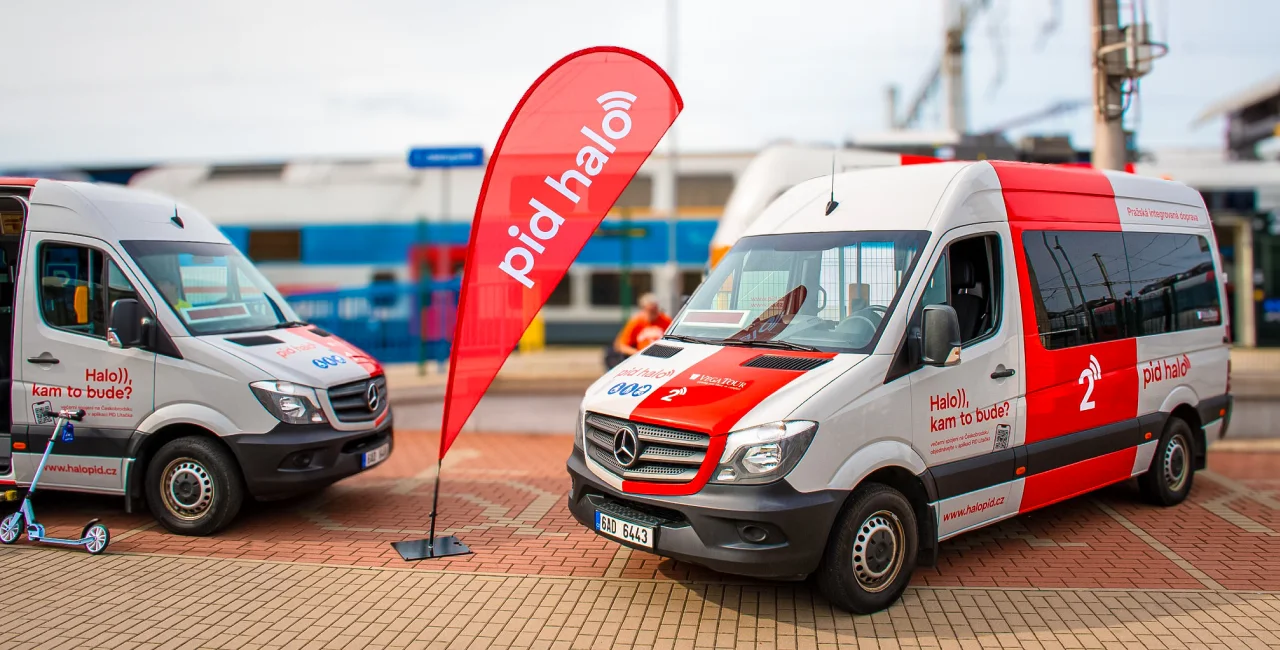Prague and Central Bohemia have launched a transport project called PID Haló, aiming to provide flexible and efficient transportation for remote areas in Prague and Central Bohemia through an on-demand service. Prague Integrated Transport (PID) officially launched the project last Friday in the Central Bohemian town of Český Brod. This new system, if proven successful, will expand to other areas in the region, potentially transforming the way people get around Prague and Central Bohemia.
Saving money and helping those in remote areas
The company behind the project, IDSK, says it is a cost-effective solution to the problem of running empty or half-empty buses on a regular schedule. It also helps people in need who have no other public-transport options. "For us, it is cheaper to send a small bus than to regularly send an empty or half-empty 12-meter bus according to the schedule," IDSK director Zdeněk Šponar said in a press release. With the successful testing of the ordering and confirmation system, the project now accepts real orders from passengers.
The test operation will run for two years, and the initial focus is on providing better transportation options for remote areas in the Central Bohemia region. Authorities chose Český Brod as a testing ground for the on-call minibuses due to the fact that the location has a good train connection to Prague, but lacks bus connections in the evening. The current bus service in the area ends at 8 a.m. on weekdays due to low demand.
Petr Borecký, the councilor for public transport in Central Bohemia, shared the estimated cost of acquiring the minibuses and the app, which was several million crowns. However, the use of cheaper minibuses and drivers with group B licenses (a less difficult requirement) is expected to reduce the overall cost of operation. "We expect that for similar money, we will be able to offer a much more flexible service, even in the later hours of the night or early morning," Borecký explained.
Order a bus on your phone
In this pilot phase, passengers in the 15 villages and hamlets in and around the Český Brod region can utilize the on-call transport service on weekdays from 8:30 p.m. to 12:30 a.m. Just like with a taxi, they can book a ride up to 30 minutes in advance through the PID Lítačka app or a special phone helpline. This innovative system operates outside of fixed routes, timetables, and times.
The on-call transport utilizes artificial intelligence-based technology to plan optimal routes based on passenger requirements. This system will provide a more convenient and personalized experience for passengers. "We could not only expand this innovative project in terms of flexibility, but also across the board to other cities and towns in the future, after the amendment of relevant laws in 2025," said Šponar.
The fare for on-call transport will be the same as PID trains and buses in the region, according to the PID tariff. The price will remain the same regardless of journey time, and even if the minibus carries only one passenger. The two eight-seater minibuses, one for the northern and one for the southern part of Český Brod, also have the capacity to accommodate strollers and passengers in wheelchairs.
Minibuses: Helping the region for 20 years
The minibus system in Prague, first introduced in 2003, has become an important supplement to the city's public transport system. These smaller buses can navigate areas where regular buses cannot (such as Old Town Square), making it possible to serve locations with limited traffic or low passenger demand.
With over 30 lines currently in operation in Prague (and 67 across all of Central Bohemia), the system has proven to be an important transportation option. In the next 20 years, the challenge will be to introduce alternative drives, such as electric buses, while maintaining cost-effectiveness, DPP says. To address this, DPP plans to utilize synergies with the tram infrastructure, charging smaller batteries from the tram's power network during operational breaks.
For PID, an important goal was to develop and produce wheelchair-accessible vehicles in this size category. This is more challenging to achieve because of the larger buses’ design and components.
Minibuses and midibuses on the PID network appear when searching a journey on the official website or the PID Lítačka app.












 Reading time: 3 minutes
Reading time: 3 minutes 




























